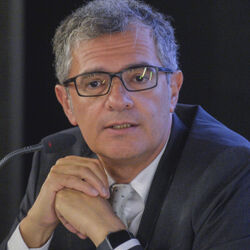EO as a Pillar of the Space Economy and Perspectives of Industrial Policy
Monday 21 October 2019, 15:10 – 16:10
Location: The Walter E. Washington Convention Center – Grand Ballroom ABC
The Earth Observation (EO) downstream sector in the industrial space value chain plays a pivotal role in terms of market creation, innovation, private investments, start-up creation and societal impacts. The downstream sector creates the conditions for the full exploitation of space infrastructures, stimulating market opportunities through the creation of new products and services for terrestrial markets with clear economic and social benefits, supporting and fostering investments in the upstream sector.
The commercial EO data market could reach $2.4 billion in 2027, driven by a mixture of defence and new commercial markets and supported by the arrival of new constellation operators. The EO market for value-added services (VAS) should reach over $5.7 billion by 2027 (Euroconsult, 2018). In Europe, the estimated market value in 2016 is around 1.2 B€, with a growing rate of 12.5% p.a., and around 7.000 employees and 460 companies (EARSC, 2017).
The EO industry is represented by a wide and complex ecosystem of companies, many of which are small and medium enterprises (SMEs), more precisely in Europe 66% are micro companies, 30% small, 3% medium and 1% large (EARSC, 2017).
The advent of large and mega-constellations of small and micro satellites, innovations and progresses in IT and other non-space sectors, the entrance of giant multinational companies and other game changers are deeply modifying perspectives, markets and business models. The EO data will become more and more a commodity rather than pure scientific outcomes (Sweeting, 2018), attracting and leveraging private investments.
The development of a downstream market for EO services and products and their self-sustainability, together with a competitive industrial ecosystem, is a crucial objective for public investors. The Global Networking Forum (GNF) will be the occasion to compare and discuss different policies to obtain such results, as well as the impacts of the above-mentioned processes from an industrial perspective and at different geographical scales. The case of Europe with the “Copernicus Effect” will be analysed, along with other macro-regional, national and regional contexts.
























































